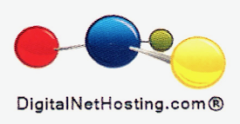What does the Cloud mean to me?
The Cloud means different things to different people. Everyone has their own views of the Cloud and myriad usage patterns have evolved, even while new and innovative options are emerging everyday.
So in essence, the Cloud is an environment where all aspects of computing are availed of as a service and consumers, be they individuals or business entities, do not own any part of it. To host and run a small application, all areas of the computing infrastructure come into play, such as the infrastructure in terms of the server and storage; the application components, including the web/application server; and the actual application, which either has to be built in-house or purchased from a vendor and customized if necessary. After the initial application is built and hosted, then other aspects come into play, such as ongoing maintenance in terms of bug fixes, upgrades, maintenance etc.
The Cloud offers three primary service options, which can be mixed and matched as per your unique requirements:
– SaaS: Software as a Service
– PaaS: Platform as a Service
– IaaS: Infrastructure as a Service.
Today, all of these aspects are available off premises via the Cloud. There are options to avail of pre-built solutions that are hosted on platforms from SaaS providers. Or, if you want to customize and/or build your own application then PaaS platforms are available, in which case capital costs in terms of server, storage, and application license costs are totally eliminated and the same application is provided as a service either on a per transaction, pay per use or subscription basis. Many larger organizations are leveraging the third option—IaaS—in order to incorporate virtualized scalability and availability into their core business applications without having to utilize their whole IT budget and server storage space just to manage peak loads.
Now let us study how different users avail the Cloud and what benefits they derive out of it.
a. End Users: The end user is an individual who is availing the Cloud for his own personal use. Most end users probably don’t even realize they are using Cloud-based applications. A typical usage scenario could be doing a Google search to find out Thai Restaurants in your neighborhood or availing of an online application to have your taxes done. In both cases, the application is hosted in a Cloud environment, and, in the former, the service is free, while in the latter, there may be a per-use charge or a subscription.
The key driving factors for end users to use the Cloud are:
– Location independent access to application functionality
– Cost effective and innovative payment models
– Low barriers for entry
b. Developers: This community will typically look for platforms that will provide the entire infrastructure needed for off premises product development—or the typical PaaS environment where complete platforms including the tools and APIs needed to build applications from scratch are available.
c. CIO/IT: IT Organizations, depending on their size and budgets can run the gamut in terms of Cloud consumption, deployment and service models. There are organizations that can consume as well as provide all the types of Cloud patterns such as SaaS, IaaS and PaaS.
d. Cloud Service Providers: The early adopters of these various strategies of SaaS, IaaS and PaaS are now leaders in their respective spaces, but there are a lot of new entrants and there is still a lot of scope in all areas—especially Cloud Services Aggregation.
e. Cloud Integrators: With myriad options presented to users and CIOs everyday and the rate at which the Cloud space is growing and evolving, it is no longer an easy decision when it comes to determining the most leveraged short-term and best long-term approach to the Cloud.
Source by tajinder

